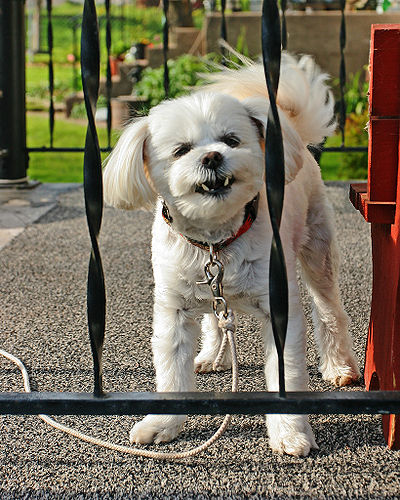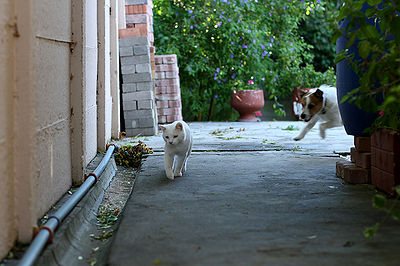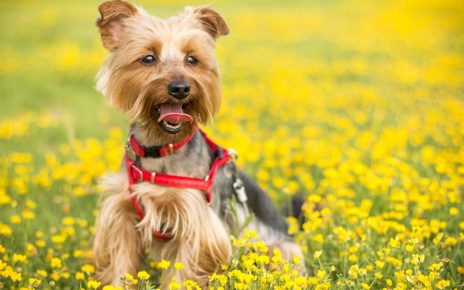
There are different growls that dogs use to make us understand what they’re feeling and get their point across to us. The lower the pitch, the more dangerous the growl is.
Usually dogs growl as a warning, letting us know if we don’t stop and stay away, we may be bitten.
Female dogs may growl to warn people or other dogs away from pups.
Some dogs will growl to hide their fear. In the wild, growling was used as a protection, much as some of our domesticated dogs use this behavior.
Dogs that have not been properly socialized with people may growl at them. If the dog realizes that growling keeps people away, this behavior continues and can escalate. A dog who is suspicious of people will eventually bite if not given the proper training.
An abused dog often learns to growl to protect itself from further abuse. Striking a dog never teaches behavior that is expected. An abused dog learns to cower or strike out. In dog hierarchy, body posture is usually enough to get a point across. In the wild when dogs fight, it’s usually because one dog is challenging the other for leadership.
Dogs sometimes become very excited and will growl during rough play. While not threatening, this could be a signal to stop and let things calm down. As the leader, you are controlling the situation.
Some dogs will resist grooming or handling. At first there may be a struggle and if that doesn’t work, a dog may resort to growling. If an owner is intimidated by the growl and obeys the dog’s request, some dogs may see this as a win and will continue this behavior. If your dog dislikes being groomed or touched, try giving treats at the same time you are grooming or handling your dog. Your dog will then associate the action with something very enjoyable.
There are dogs who are food aggressive and will growl if you come anywhere near their bowls or bones or treats. A dog should learn from puppyhood that this is not acceptable behavior. Your dog should be taught to “drop it” and “leave it”. If your dog continues growling and showing aggressive behavior, it’s time to consult an animal behaviorist.
Dogs that have suffered injuries and/or are in pain, sometimes growl in response to that pain. It may be your own dog or an injured stray. Try covering the dog with a blanket or any material to help with shock and call your vet or emergency services, giving your location and as much information as you are aware of.
Your dog may claim a spot on the bed or the sofa and refuse to move when asked. If your dog growls and you show fear, your dog will interpret this as a sign that he’s the boss. If you are unable to physically remove your dog from the place he has claimed as his own, it’s time to call in a professional who will teach you how to handle the situation.
Don’t punish or scold your dog for growling. You’re taking away the dog’s ability to communicate and perhaps warn of a bite that may ensue. Dogs that are taught not to growl often have a reputation for biting without warning. Find out what the problem is and try to deal with it.
In most cases of aggressive growling, fear growling or general aggression, the behavior may have been allowed to reach a point of danger. It’s best to consult with an animal behaviorist or trainer who can help you correct this behavior.
Related articles:



